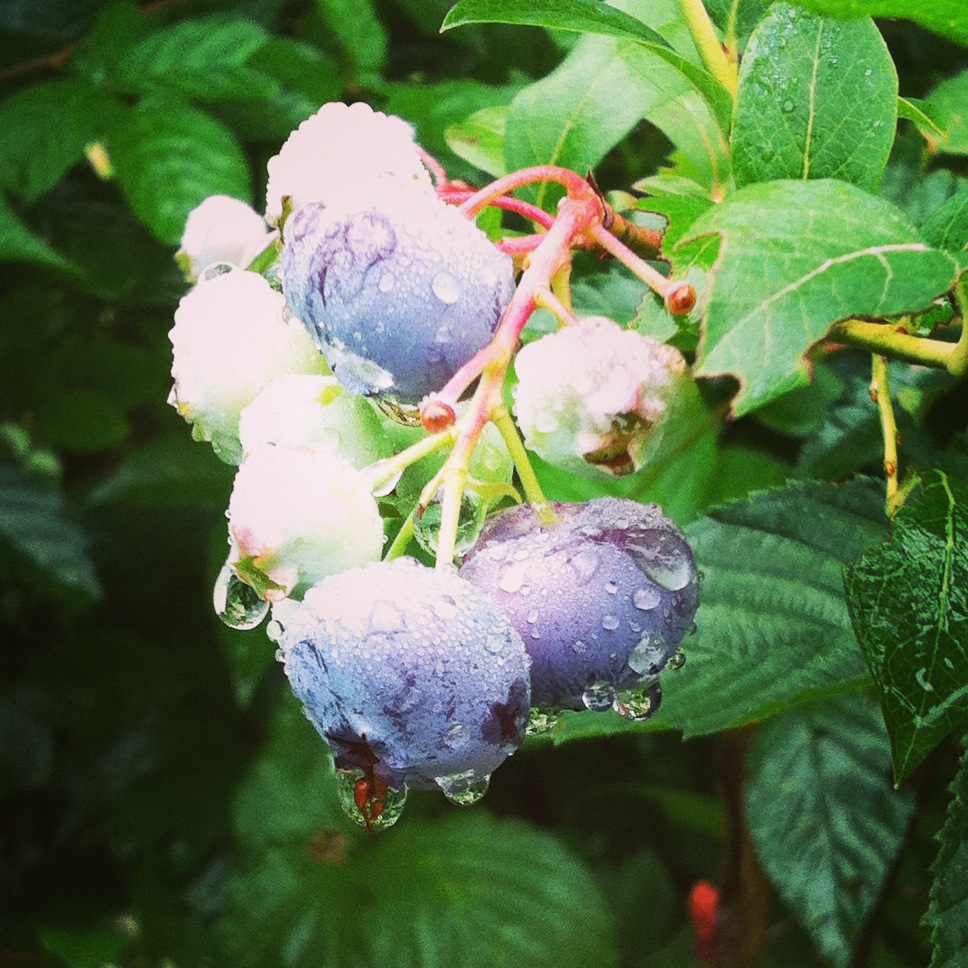Posts in Category: blog
Blue Berries and Fog
Morning fog, something that we rarely experience in Colorado, was what what we woke up to most mornings in Maine on our vacation. It is a mysterious, magical and sometimes eerie feeling of not being able to see what is coming at you or what is there just beyond sight.
Similar to future goals and wishes and hopes, sometimes we are so caught in the fog of not knowing, hoping and wishing that we forget to experience the beauty of the fog itself. We forget to enjoy the time we have now and forget to experience family and life and love in the here and now.
In the fog in the mornings in Maine were hundreds of gorgeous flowers, lively birds, chirpy bats, blueberries, butterflies, thunder and lightning, sailboats, seashells, fireflies, tennis courts, corn on the cob, friends and family (both new and old). I challenge you all to experience your fog just as much as your wishes and hopes for the future, because when you blink the fog could be gone, as well as the magic and the mystery.
Lupine and Lighthouses
 In anticipation for my trip to Maine to visit family, I had to put up a picture of lupine in a field, the light house was just a perk in the picture. But, both lupine and lighthouses are quintessential Maine symbols.
In anticipation for my trip to Maine to visit family, I had to put up a picture of lupine in a field, the light house was just a perk in the picture. But, both lupine and lighthouses are quintessential Maine symbols.
Lighthouses, of course, have their own symbolic meaning. Helping sailors find their way home. Sometimes returning to home after years at sea, sailors found the lighthouse to be a saving grace and a beacon to safety. As I head home the light house symbolizes home, water ( a much missed element in the dry heat of Colorado), and the quaint relaxing energy of Maine.
Lupine are also a lovely reminder of how beautiful Maine is. In June there are lupine festivals. Lupine photography and paintings adorn much of Maine art and craft. When I was a ceramist’s mentor back in the 90’s I painted lots and lots of lupines on pots and plates and tiles. Lupine with its star-shaped leaves and tall proud purple and pink rockets are gorgeous en mass and they are certainly a main-stay in Maine.
There are many Lupine species and only one or two are native to Maine. The roadside lupine that is all over Maine is actually an invasive species, though is relatively benign. Lupine in many parts of the world is grown for culinary purposes, though only the sweet lupine or Australia is apparently palatable.
So, more pictures and posts to come from Maine in the next few weeks as we venture to that part of the country, and are guided home to Maine to the Lupines and Lighthouses.
Honey bees
 Honey bees are incredibly important pollinators for our nation’s food production. Honey bees and consequently our food supply are in danger. Neonicotinoids are to blame. They are in common everyday pesticides that many farmers and plant grower use to keep pests off the plants. The problem is that this substance is messing with the bee nervous system and is killing of the bees at an alarming rate. It is closely related to nicotine and we all know how that effects humans! Here is a list of products containing neonicotinoids so that we as consumers can choose not to use these products in our own garden.
Honey bees are incredibly important pollinators for our nation’s food production. Honey bees and consequently our food supply are in danger. Neonicotinoids are to blame. They are in common everyday pesticides that many farmers and plant grower use to keep pests off the plants. The problem is that this substance is messing with the bee nervous system and is killing of the bees at an alarming rate. It is closely related to nicotine and we all know how that effects humans! Here is a list of products containing neonicotinoids so that we as consumers can choose not to use these products in our own garden.
If you would like to plant your own garden to help the honey bees find clean food here are some things to consider:
- Try to find starter plants that have not been treated with neonics
- Plant your own seedlings
- Use only organic herbicides and pesticides (better for your health too)
- Learn how to attract beneficial bees here
- Learn how to plant a bee garden here at the Honey Bee Conservancy
Fairy Gardening
 I will be helping out at the Living Arts School Fairy Gardening Camp this week. We’ll be making fairy gardens and fairy houses out of found objects. So excited to see what the campers come up with. Here is a picture of the demo for the class. The tray was found at resource center and the house is made of found beach glass!
I will be helping out at the Living Arts School Fairy Gardening Camp this week. We’ll be making fairy gardens and fairy houses out of found objects. So excited to see what the campers come up with. Here is a picture of the demo for the class. The tray was found at resource center and the house is made of found beach glass!
Lavish Lavender
Lavender is an amazing herb! It’s uses include: digestive healing, disinfecting, improving circulation, treatment for skin conditions, treats minor respiratory ailments, induces sleep and helps to release tension and stress! As a plant it is great for a low-water garden and it smells terrific!


